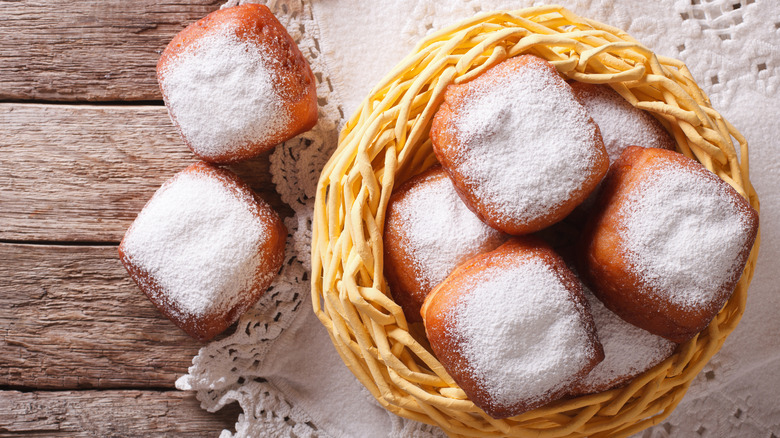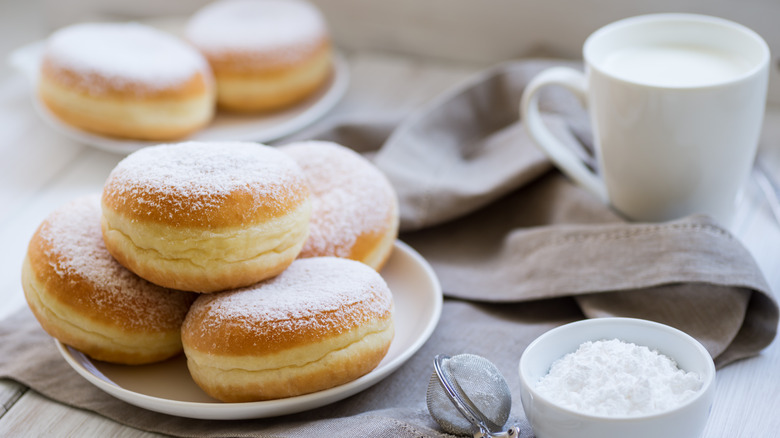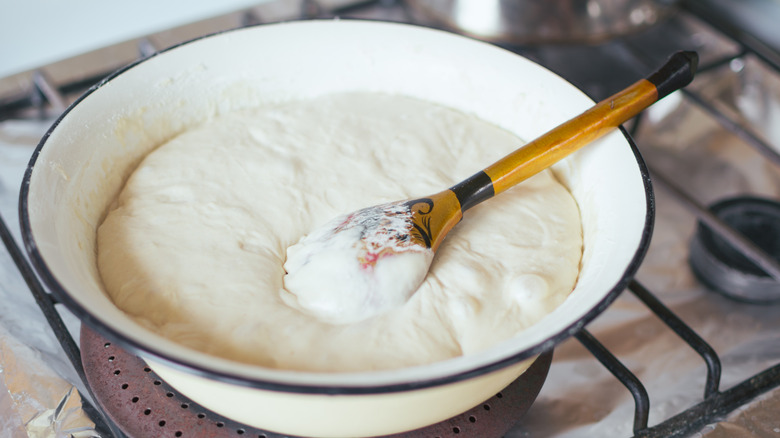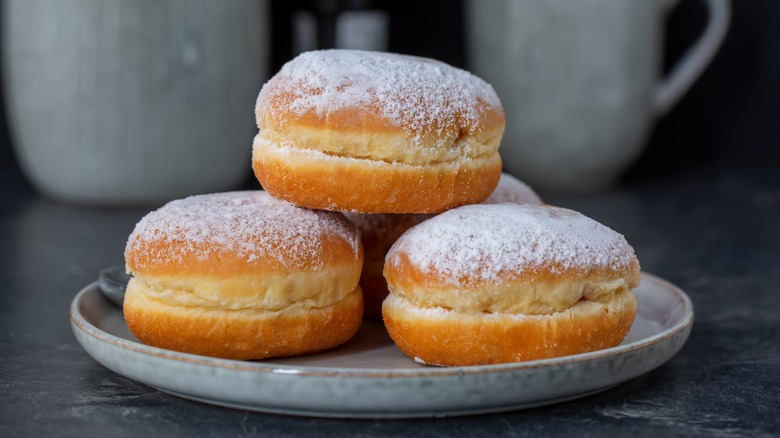The German Pastries That Hold A Sacred Place In Pennsylvania Cuisine
While France may be known for its pastries like croissants and profiteroles, Germany has some of the world's best and most flavorful pastries in the world as well. Whether you've seen them made on your favorite cooking show or your parents made them for you during holidays, you've probably looked at a German pastry and felt your mouth begin to water. Germany takes the cake when it comes to making desserts like the famous schwarzwälder kirschtorte (black forest cake), apfelstrudel (apple strudel), knödel (dumplings), lebküchen (gingerbread) and franzbrötchen. All of which are wonderfully rich.
Vice notes that Germany has had a long history of skilled pastry-making. Baking has been entrenched in German cuisine for hundreds of years and is tightly wound with historical pagan and Christian religious practices within the country. A pastry recipe heavily linked with a religious holiday is the German fasnacht which is the perfect pre-Lent dessert. Discover Lancaster tells us that these fasnachts are German doughnuts characterized by a traditional square shape, a lack of a hole at their center, and the fact that they are notably less sweet than other donut recipes.
History
Fasnachts look like big, round donuts fried to an attractive golden brown and sprinkled in sugar, much like beignets. Atlas Obscura says that these treats are German-inspired pastries dating back to at least the 13th century, though the recipe has changed throughout the years. In the United States, for the most part, in Pennsylvania's Berks, Lancaster, and Lebanon Counties, making and eating fasnachts is an annual tradition where the sweet treats are made with one of America's original food crops; the potato. They were not always made from the starchy tuber, but the potato has since become a key part of the fasnacht recipe.
Fasnachts are a common Shrove Tuesday dessert and were created to use up flour, butter, and sugar before Lent fasting commenced. This culinary dish is an iconic dessert in Pennsylvania Dutch Country because much of the population are the descendants of German immigrants. According to Moon, the Pennsylvania Germans came in vast numbers to the Keystone State before the 19th century because William Penn, founder of the Pennsylvania province, promised religious freedom to Europeans. This is how the fried fasnacht dish crossed the ocean and planted roots in the Northeastern United States.
How they're made
A fasnacht is technically a donut, but trust us, it is like no donut you've had before! What makes them so special? PennLive says that authentic fasnacht recipes use yeast (or some kind of leavening agent) and mashed potatoes deep-fried in lard. The word "fasnacht" translates in Gemran to the "night before the fast." The fast referenced is the Christian holiday of Lent, where certain foods are forsaken until Easter. The fasnacht William Penn ate centuries ago was often halved horizontally and slathered with a spoonful of sticky-sweet molasses, but today in bakeries and at home, people dress up their donuts using cinnamon sugar and colorful sprinkles.
Besides the use of pureed potatoes in the recipe, they are made much like any other fried pastry! According to No Plate Like Home, the yeast-risen dessert is known for its dense structure. You must make a potato mash which is then mixed with the basic donut ingredients like sugar, flour, butter, and eggs with bloomed yeast, and the slightly-sticky dough is left to rise slowly overnight (at least eight hours) to cultivate flavor and texture. But the key to the perfect fasnacht isn't just the dough; it's how you cook it. Your frying lard (or whatever oil you choose to use) must be between 400 and 425 degrees Fahrenheit. Cook the fasnacht for two to four minutes on either side. When you remove it from the oil, be sure to sprinkle sugar on top while it's still hot!
How to serve fasnachts
Due to their origins, fasnachts are a traditional Shrove Tuesday, aka "Fat Tuesday" recipe historically enjoyed by German Christians in Europe and Pennsylvania Dutch. A Coalcracker in the Kitchen tells us that this donut-eating day is celebrated as Mardi Gras in New Orleans and in both small and big ways throughout Christian communities around the globe, but fasnachts are particularly sacred to the state of Pennsylvania. Bakeries in the coal region specialize in making fasnachts, and these sugared (powdered, glazed, or otherwise) donuts are best-sellers. So much so that you'll be lucky to get one on Shrove Tuesday.
Now, you know when these fasnachts are eaten, but how are they served? According to the Webstaurant Store, a classic way to eat fasnacht is to cut it lengthwise and slather it with butter and maple syrup, much like a sweet sandwich. Fasnachts don't have holes like other kinds of donuts, so any sugary additions stuffed inside won't easily fall out. Another common way to serve fasnachts is to cover them in powdered sugar or granulated sugar, but any way to like them, these German pastries are the perfect way to stuff yourself with all that sugar and fat before fasting.



